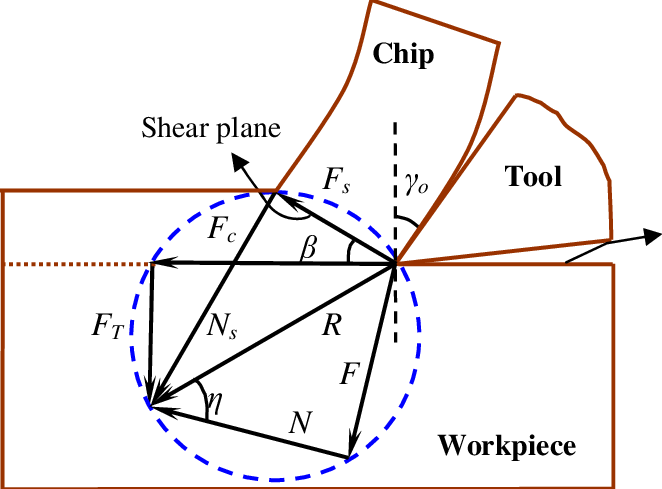In the world of computers and networking, certain terms and numbers pop up frequently that can seem a bit mysterious to the average user. One of those terms is 127.0.0.1:62893. If you’re here, you’ve probably seen something similar appear in logs, command-line outputs, or while troubleshooting a network issue. It might look intimidating, but fear not! By the end of this article, you’ll understand exactly what 127.0.0.1:62893 represents, how it works, and why it’s important in computer networking.
To begin with, let’s break down the first part of our topic: 127.0.0.1. This is an IP address, and more specifically, it’s a loopback address.
What is an IP Address?
An IP address (Internet Protocol address) is a numerical label assigned to each device connected to a network that uses the Internet Protocol for communication. Think of it as the address for your house, but in this case, it’s for your computer or device on a network. IP addresses help identify and locate devices so they can communicate with each other.
In most real-world scenarios, your router would assign your computer an IP address like 192.168.1.100, allowing it to connect to the Internet or other devices on your home network. However, 127.0.0.1 is a bit different.
What is the Loopback Address?

127.0.0.1 is a special IP address reserved as a loopback address. This means that it points back to your computer. Instead of communicating with another device, this address is used when a computer needs to communicate with itself. It’s like addressing a letter to your own home.
This loopback address is part of the local host network, which is entirely internal. Whenever a program or service needs to send a message or data back to itself, it can use 127.0.0.1 as the destination.
In simple terms, when you see 127.0.0.1, it’s your computer talking to itself, often for testing purposes or when software components need to interact locally.
- What is a Port Number? Introducing 62893
Now that we’ve covered 127.0.0.1, let’s discuss the second part of the topic: 62893. This number might seem random, but it represents something called a port number.
What is a Port?
A port is like a channel or a door that a computer uses to send or receive data. Just as an office building might have different departments, each with its room number, a computer uses different ports to manage multiple applications and services at the same time.
There are 65,535 possible port numbers, with 0–1023 being reserved for well-known services and the rest available for custom or dynamic use. For example:
- Port 80 is used for HTTP traffic (web browsers).
- Port 443 is used for HTTPS traffic (secure web browsing).
- Port 25 is used for SMTP (email servers).
Port 62893: A Dynamic or Ephemeral Port
In the case of 62893, this is considered a dynamic port. Dynamic ports, also known as ephemeral ports, are temporary and assigned by the operating system for short-lived connections. When a program on your computer needs to make a network connection (even if it’s to itself), it often uses a random dynamic port, such as 62893.
When your system assigns port 62893, it’s being used temporarily for a specific communication session, and after that, it might be assigned a different port for future communications.
- The Loopback Address: How 127.0.0.1 Works
At this point, you know that 127.0.0.1 refers to the computer’s internal loopback address and 62893 is a specific port on that address. But why do we use 127.0.0.1 instead of just the word “localhost,” and how does it work?
How Does 127.0.0.1 Work in Networking?
The loopback interface (assigned to 127.0.0.1) acts as a shortcut for internal communication. Instead of sending data out over the network and back to your machine, it stays entirely within your operating system.
Let’s say you have a program running on your computer that’s pretending to be a web server. If you want to test how this web server works without connecting to the internet, you should use 127.0.0.1. This lets you interact with the server as if it’s remote, even though it’s running on the same machine.
The beauty of 127.0.0.1 is that it allows developers to test their software locally before deploying it to a live environment, ensuring everything works as intended without exposing it to external threats.
Loopback in Real-Life Scenarios
The loopback interface is used in a variety of common scenarios:
- Web Development: When creating and testing web applications locally, developers often use 127.0.0.1 to ensure their code functions as expected before going live.
- Network Configuration Testing: Network administrators use 127.0.0.1 to test applications that rely on network connectivity without needing to involve external networks.
- Local Security: Security tools and firewalls can monitor traffic on the loopback interface to ensure there are no unauthorized internal communications.
- How Ports Work: Why Use Port 62893?
We’ve already touched on the idea that ports are like doors that allow data to flow in and out of a computer. But why use port 62893 in particular, and how does a system choose which port to assign?
The Role of Ports in Network Communication
Every service or application on a computer that connects to a network needs to use a specific port to differentiate itself from other services. Ports are essential for organizing network traffic. For example:
- When you visit a website, your browser is connecting to a web server using port 80 or 443.
- When you send an email, your email client is connecting to an email server using port 25 (for SMTP).
Each application or service must be assigned a unique port to avoid conflicts.
Why 62893? Dynamic Ports Explained
Port 62893 falls into the dynamic port range (49152–65535). These ports are not assigned to any specific service, meaning they can be used for short-lived connections initiated by the operating system. For instance, when you open a web browser and visit a website, your computer assigns a dynamic port like 62893 to handle the connection to the web server. Once the session is over, that port becomes available for use by another connection.
Dynamic ports like 62893 are ideal for applications that need temporary, fast communication channels. Your computer can assign them as needed without worrying about permanent conflicts.
- When and Where Do We Encounter 127.0.0.1:62893?
Now that we have a solid understanding of both 127.0.0.1 and 62893, let’s explore when and where this combination shows up in real-world scenarios. You might encounter 127.0.0.1:62893 in several situations, especially if you’re working with web development, software testing, or system troubleshooting.
Web Development and Local Testing
If you’re a web developer, you’ll often need to test web applications locally before making them live. For this, you can set up a local server on your computer and use 127.0.0.1 to interact with it. The application might dynamically assign ports (like 62893) to serve different parts of the web app. This is a common workflow for developing in environments like Node.js, PHP, or Python using local servers like XAMPP or WAMP.
In such cases, you might see URLs like http://127.0.0.1:62893 in your browser as you work on your project. This is your computer, acting both as the server and the client, using 127.0.0.1 to communicate with itself over port 62893.
Running Local Databases or Other Services
Similarly, many software applications, especially databases like MySQL or PostgreSQL, may run locally on your machine and use 127.0.0.1 for testing and development purposes. Ports like 62893 are assigned dynamically for different sessions.
For example, when developing a web app that connects to a local database, your app will often communicate over a loopback interface to retrieve or store data while the software is in development mode. In such cases, you’ll encounter combinations like 127.0.0.1:62893 as part of the database connection string.
- Practical Uses of 127.0.0.1:62893 in Software Development
Local Server and Client Communication
One of the most common uses of 127.0.0.1:62893 is in scenarios where both a client and a server run on the same machine. Consider, for example, a developer testing an API (Application Programming Interface) locally. The API server is running on 127.0.0.1, and the port (like 62893) is dynamically assigned for that particular session. The developer’s client software, also running locally, will communicate with the API over that port.
This setup allows the developer to make requests to the API and check the responses in real time without needing to connect to a remote server. Using 127.0.0.1:62893 provides a controlled environment for testing and debugging.
Containerization and Virtual Machines
With the rise of technologies like Docker and virtual machines, it’s common to encounter 127.0.0.1:62893 when running software in isolated environments. Docker containers, for instance, are often set up with local networking configurations, allowing them to communicate via the loopback address and dynamic ports. This allows for the simulation of complex environments without needing actual network resources.
If you’re developing or testing software in these environments, you’ll frequently see 127.0.0.1:62893 in log files, configuration outputs, or when troubleshooting connection issues.
- Troubleshooting with 127.0.0.1 and Common Issues
While 127.0.0.1:62893 usually works seamlessly in most scenarios, there are times when things can go wrong. When it does, you might encounter errors like “connection refused” or “port already in use.”
Common Issues with 127.0.0.1:62893
- Port Conflicts: Since ports are finite, a port like 62893 can be in use by another process, causing conflicts. When this happens, you’ll need to identify which application is using the port and either stop that process or use a different port.
- Firewall Restrictions: Firewalls are designed to block unauthorized network traffic, and they might block communications on certain ports, even if it’s internal traffic on 127.0.0.1. Configuring your firewall settings might be necessary to allow local communications on dynamic ports.
- Misconfigured Services: Sometimes, services might not be configured properly to listen on the correct port or IP address. Double-checking service configuration files can help resolve issues where a service isn’t accessible on 127.0.0.1.
Tools for Troubleshooting
There are several tools available to help troubleshoot issues related to 127.0.0.1 and dynamic ports like 62893:
- netstat: This tool shows active connections and helps identify which ports are in use.
- Telnet or nc (netcat): These utilities allow you to manually test if a specific port (like 62893) is open and listening.
- Wireshark: A powerful tool for monitoring network traffic, including loopback traffic on 127.0.0.1.
By using these tools, you can diagnose and fix most issues related to 127.0.0.1:62893.
- Conclusion: The Bigger Picture of Local Networking
At first glance, 127.0.0.1:62893 might seem like a random jumble of numbers, but it’s a fundamental part of how computers communicate internally. The 127.0.0.1 loopback address allows a machine to talk to itself, making it essential for testing, software development, and running local services. Meanwhile, port number 62893 represents a dynamic communication channel, assigned by the system to facilitate specific tasks.
Whether you’re a developer testing a new application, a network administrator configuring services, or just curious about how your computer works, understanding 127.0.0.1:62893 gives you insight into the inner workings of local networking. It’s a reminder that even complex systems are built on simple, logical foundations.
As you encounter 127.0.0.1:62893 or similar addresses in the future, you’ll now know exactly what’s happening behind the scenes—your computer is communicating with itself, making connections, and facilitating the technology we all rely on every day.








Leave a Reply